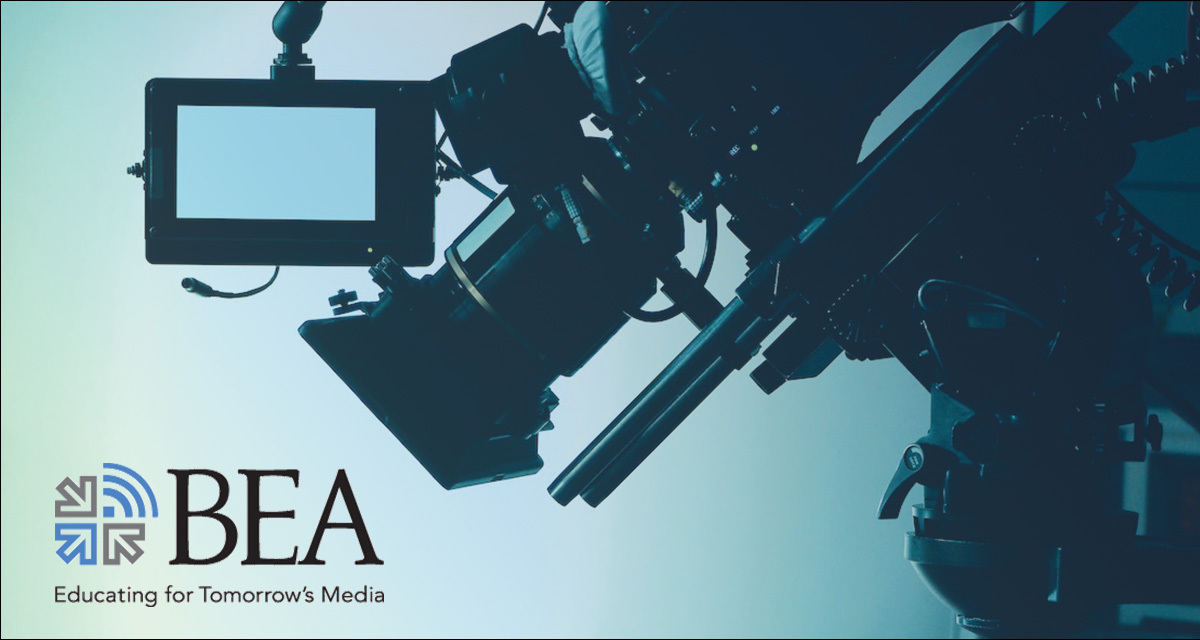Four Gordon Students Receive Broadcast Education Association Awards
Four Gordon College students received awards from the Broadcast Education Association and were recognized at the annual Festival of Media Arts in Las Vegas last month. This marks the first time Gordon has placed in this top national college production competition, which draws over 1,500 entries each year from some of the biggest, most well-known media colleges from around the nation.
Lilli Johnson ’23, Sarah Ratzlaff ’23 and Anna (Xin) Qi ’23 won second place in the Instructional/Education Media category for “The Climate is Changing and So Is My Home”. Kobi Bui x’26 received an award of excellence in Short Form Documentary Video for “The Get Back.”
Johnson, Ratzlaff and Qi created their motion graphic piece for Kelly Foster’s (art) Motion Graphics class, and they placed alongside teams from the University of Oklahoma and Appalachian State. Bui’s documentary was completed in conjunction with Dr. Chris Underation (communication arts), and his award came alongside accolades for Arizona State, Ball State and the University of Florida. It was then released by Premier League Lacrosse in November 2022.
The Bell sat down with Johnson to discuss the details of her group’s “The Climate is Changing and So Is My Home” motion graphics piece.
Q: What led you to choose the topic of food insecurity and displacement?
A: In our motion graphics class with Kelly Foster we learned how valuable animation can be when attempting to explain complex topics or raise awareness of social problems. The class introduced us to Dorothy Boorse’s (biology) contribution as lead author of “Loving the Least of These,” which prompted our interest to investigate how food insecurity is linked to displacement. We felt compelled to share the real-world examples of those who suffer due to a lack of reliable access to adequate food. We learned that climate change is exacerbating this problem as extreme weather events destroy crops and irregular season changes reduce yields. As we continued to learn more about the prevalence of this issue, the importance of this project became clear.
Q: What was the process of collecting the research, crafting the storyline and developing the motion graphics?
A: The process took about two months, and each of us spent countless hours writing, editing, illustrating and animating this video to its completion. Our research began with a careful reading of “Loving the Least of These” and extended to suggested scholarly sources to understand first what food insecurity is, then why displacement is occurring as a result and finally how climate change is leading to these shifts. We understood that for many viewers, this may be their first exposure to these topics, so it was necessary for the video to show why they should care and inspire hope for a way forward.
Q: What do you hope people do after watching this video?
A: At times this project placed an unbearable burden on the hearts of everyone in the class. It seemed hopeless that our little animations would help this global issue. However, we realized that the goal was to educate and inspire change, not solve. Our hope for this video is that viewers would seek to understand more about how their daily actions can shift [and lead to] a better way forward against climate change. As Christians we are called to love the least of these (Matthew 25:40), meaning we are to extend a hand to those who are ignored or isolated. After watching this video we hope viewers will reflect on decisions in their own life, their workplace or companies they support to consider where improvements can be made to truly love the least of these.
Q: How does it feel to be a recipient of this competitive award?
A: We are so honored to be recognized by the Broadcast Education Association. From our first brainstorming session to the final moments of rendering the video, we gave this project 110%. We didn’t know it was going to be submitted for this competition until the end, so we were very glad we set our expectations high when we learned that the project would reach beyond the classroom. In this case all those hours in the computer lab really paid off!
 The Bell
The Bell